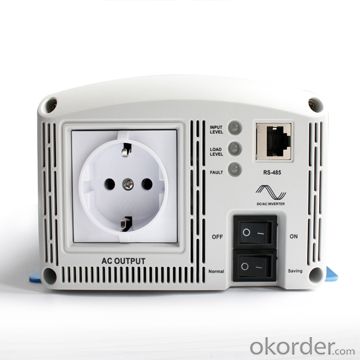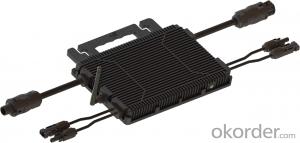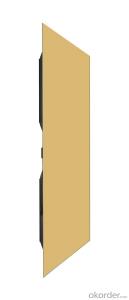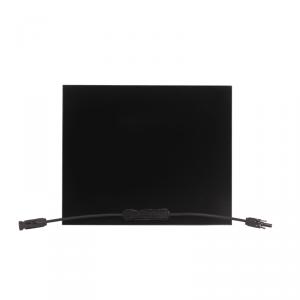Loading Port:China Main Port
Payment Terms:TT or LC
Min Order Qty:-
Supply Capability:-
Description
STI series is a sine wave power frequency inverter which can convert 12V or 24V DC to 220VAC or 230VAC 50Hz based on full digital and intelligent design. The inverter can be applied in many fields especially for solar photovoltaic power system.

Features:
·Complete isolation-type inverter technology, noiseless output
·Adoption of advanced SPWM technology, pure sine wave output
·Dynamic current loop control technology to ensure inverter reliable operation.
·Wide DC input voltage range
·Excellent EMC design
·Low output harmonic distortion(THD≤3%)
·LED indicators display input voltage range, load power range, normal output & failure state
·Optional energy saving mode
·Wide working temperature range (industrial level)
·Continuous operation at full power
Protections:
·Output Short Circuit protection
·Overload protection
·Input reverse polarity protection
·Input low voltage protection
·Input over voltage protection
·Inverter abnormal protection
·Overheating protection

Specification:
Model | STI200-12-220 | STI200-24-220 | |
STI200-12-230 | STI200-24-230 | ||
Nominal battery voltage | 12V | 24V | |
Input voltage range | 10.5~16V | 21~32V | |
Consumption no load(ON) | ≤4W | ≤5W | |
Consumption no load (Saving) | ≤2W | ≤2W | |
Output voltage | AC220/230V±3% | ||
Continuous power | 200VA | ||
Power 10sec | 300VA | ||
Power 1.5sec | 400VA | ||
Surge power | 640VA | ||
Output mode | Single Phase | ||
Wave form | Pure Sine Wave | ||
Frequency | 50Hz±0.2% | ||
Distortion THD ( resistive load) | ≤ 3% | ≤ 2% | |
Efficiency at rated power | ≥81% | ≥85% | |
Max. efficiency | ≥88% | ≥89% | |
Dimension | 315*166*101mm | ||
Net weight | 4.5kg | ||
Working temperature | -20℃~ +50℃ | ||
Humidity | < 95%(non-condensation) | ||
Altitude | < 5000m(Derating to operate according to IEC62040 at a height exceeding 1000 m) | ||
FAQ
Can a solar powered LED lighting without inverter?Of course you can run lights without inverters. Both LEDs and incandescent lamps are quite happy on DC. And there are fluorescent ballasts that take a DC input (although they do have a sort of inverter inside). I have one in my shed and it has been working just fine for at least 15 years. It is very simple, easy and efficient. You can do away with the electrical code for wiring, lower you cost. Use less energy and lower the cost to install. In fact is we did this to power may of our day to day items we would also lower the demand for power.
Keep in mind this goes against every manufacturer and government policy and you will be shut down, squashed and run out of town for even talking about this, or at least you used to. I am working on a way to use the current wiring in a home to have direct solar, batter bank lighting. By coming off the grid for your lighting and many other functions, a power outage would hardly make a difference to your home.
SMA did bump up the warranty to 10 years when CSI demanded all inverter manufacturers to do so. The European Sunny Boys are only warrantied for 5 years.
iPhones only have a one year warranty. Does that mean Apple products aren't reliable? Enphase offers a 25 year warranty on their inverters but only one year on their monitoring. Does this mean their monitoring is not as reliable as their inverter? Of course not.
Offering long warranties have very real costs, especially for publicly traded companies like SMA. If we were to offer a 25 year warranty, we would have to hold a higher reserve on our balance sheet, making our products more expensive. We think that our customers would rather have our high quality products at a lower cost.
Start-ups invariably offer long warranties to make up for lack of track record or the perception of quality problems. As the unfortunate recent events at Solyndra have shown, long warranties offered by start-ups can have limited practical value.
Analogies can be drawn to the wind industry: in the early days, customers requested very long warranties (20 years or so), since it was the wild west and no one had a clue about long term O&M requirements for these big new turbines. Now that the wind industry has matured, turbine warranties are again very short (2 years is typical) since the large suppliers have a track record of shipping quality product that does not fail when properly maintained. You could say that PV today is like the wild west environment in wind 10 years ago.



